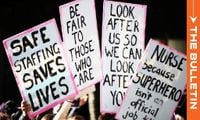On October 23, 2025, New Zealand found itself in the grip of a tempestuous double crisis: the nation’s fiercest winds in recent memory battered cities and countryside for the second time in a week, while more than 100,000 health and education workers staged what was billed as the country’s largest coordinated strike in decades. The result? A day of chaos, resilience, and intense debate over the future of New Zealand’s public sector and its ability to weather literal and figurative storms.
According to AP and RNZ, the worst of the gales struck the lower North Island—home to the capital Wellington—and parts of the South Island, including Christchurch. The national meteorological service, MetService, issued rare “red” wind warnings, the highest possible alert, for multiple regions. Urban centers clocked wind speeds between 140 and 160 kilometers per hour (87 to 100 mph), while a remote area of the South Island recorded a staggering gust of 230 km/h (143 mph). These conditions toppled trees, ripped roofs from homes, and even sent shipping containers tumbling at Dunedin port.
As the winds howled, New Zealanders experienced widespread disruption. More than 200 flights were canceled nationwide, leaving airports in disarray. Tens of thousands of homes and businesses lost electricity, and schools across the affected regions closed their doors. Several highways—including all routes to the remote West Coast of the South Island—were shut due to flooding and fallen debris, effectively cutting off entire communities. The national fire service enacted bans on fireworks and open flames for the remainder of the week, citing wildfires whipped up by the relentless winds. Firefighters, already stretched thin, struggled to contain the blazes as the weather refused to cooperate.
Despite the ferocity of the storm, authorities reported no deaths or serious injuries on Thursday. However, the nation was still reeling from a tragedy earlier in the week, when a Wellington man was killed by a falling tree branch during a previous bout of severe weather. As rivers rose and flood threats loomed in some South Island regions, officials urged travelers to remain cautious, warning that the winds would only begin to subside by Friday.
Amid this meteorological mayhem, New Zealand’s public sector was already bracing for a different kind of upheaval. Months of contentious negotiations between the government and unions representing teachers, doctors, nurses, and other healthcare professionals had broken down. In response, more than 100,000 workers—about half of them teachers, the rest including doctors, dentists, nurses, and social workers—walked off the job for four hours in a coordinated “mega strike.” According to The Spinoff and Newsroom, the action brought together members of the Public Service Association, the New Zealand Nurses Organisation, NZEI Te Riu Roa, the Post Primary Teachers’ Association, and the Association of Salaried Medical Specialists, with 1,200 ACC staff joining late in the planning.
The unions’ demands varied by sector but centered on three issues: pay, staffing levels, and working conditions. As union leaders told AP, “workers were still on strike, even where demonstrations were canceled.” The industrial action was fueled by frustration at steep government cuts to public spending and a record exodus of skilled workers—especially medical professionals—to neighboring Australia, where higher salaries and lower living costs beckon. “Doctors can argue they are striking out of concern that unless their claims are addressed even greater harms will result,” wrote University of Otago bioethicist Elizabeth Fenton in The Conversation, defending the ethical grounds of the walkout.
But the wild weather threw a wrench into plans for mass demonstrations. Outdoor rallies in Wellington, Wairarapa, Christchurch, and several South Island towns were canceled or moved indoors at the last minute, as reported by RNZ. Yet, the storm could not completely silence the collective voice: thousands still marched in Auckland and Hamilton, and hundreds more gathered in smaller towns untouched by the worst of the gales. Many others showed solidarity on social media, while some hospital staff in Nelson returned to work when their facility lost power in the high winds—underscoring the complex balance between protest and public safety.
Hospitals and emergency rooms remained open throughout the strike, but the government health agency advised people to seek medical attention only for urgent matters. Thousands of non-urgent appointments and procedures were postponed, impacting families and patients across the country. Schools, already shuttered by the weather, faced further disruption as around 40,000 teachers joined the walkout, forcing parents to scramble for childcare and prompting education Minister Erica Stanford to say parents should be “furious” about the timing of the strike coinciding with exam days.
The government’s response was swift and uncompromising. Public service minister Judith Collins penned an open letter accusing unions of being “politically motivated” and insisting that “the country is simply not earning enough” to meet their demands. Health minister Simeon Brown went further, accusing striking doctors of “crossing an ethical line.” Union leaders, meanwhile, rejected claims of partisanship, noting that strikes had also taken place under the previous center-left government.
Yet, public sentiment appeared to side with the strikers. A Talbot Mills poll published by Newsroom this week found that 65% of respondents supported the industrial action, with nearly half of coalition government voters expressing more sympathy for the unions than for the administration. This groundswell of support suggests that, despite official rhetoric, many New Zealanders recognize the mounting pressures facing public sector workers—and perhaps see the strike as a necessary stand for the future of health and education services.
By Thursday night, as major highways remained closed and rivers threatened to breach their banks, the nation waited for the winds to abate and for the dust—literal and political—to settle. With bans on fireworks and fires still in force and firefighters battling stubborn wildfires, the challenges ahead remain formidable. Yet, the events of October 23, 2025, have thrown a spotlight on the vulnerabilities and strengths of New Zealand’s social fabric, reminding all who watched that sometimes, the fiercest storms reveal the deepest currents of change.


